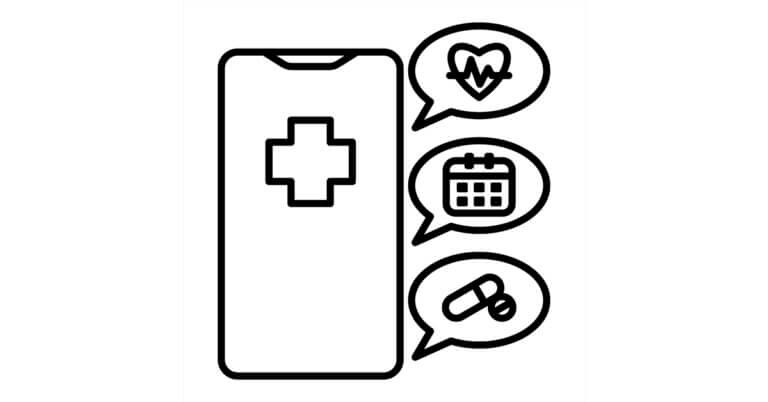April 22, 2021

Affordability of Medical Care Stuck on Healthcare’s Back Burner
Hey, I’m healthcare affordability! Remember me? I was a growing problem before the pandemic. I kept at it while the rest of you understandably were coping with COVID-19. When the pandemic ends, I’ll be here, even more expensive than ever. What are you going to do about it?
OK, back to the real me, a healthcare journalist who’s been tracking healthcare affordability despite the pandemic, looking for evidence that medical care has gotten more affordable for customers. I’m sorry to report that I’m coming up short. Here’s a rundown of some of the things I’ve seen.
One Bill Can Kill Your Co-Pay
In February, researchers from Emory, Vanderbilt and Boston universities published their study in Health Affairs that looked at when people incur out-of-pocket healthcare costs and how that affects how much care they can afford. You can download the study here.

The researchers’ study pool was 18 million people who had commercial health insurance in 2017 for the entire calendar year. They defined healthcare encounters as days for which patients incurred a claim for inpatient care, outpatient care or a prescription medication. They defined out-of-pocket spending as the total of deductibles, co-pays and coinsurance payments of those claims. And they looked at patients’ out-of-pocket financial responsibility at three levels depending on their plan: $400; $1,300; and $7,150.
Here’s what they found:
- 40 percent of the patients incurred half of their annual out-of-pocket spending with just one encounter.
- 26 percent of the patients incurred 90 percent of their annual out-of-pocket spending with just one or two encounters.
- 26 percent of the patients incurred at least $400 in out-of-pocket spending in just one month during the calendar year.
“The distribution of out-of-pocket spending throughout the year is an important determinant of healthcare affordability. As a consequence, a large healthcare expense at a given moment may be unaffordable,” the researchers said.
Skipping Care Because Of The Cost
In March, Gallup and West Health released the results of a consumer poll that led the survey sponsors to proclaim that “an estimated 46 million cannot afford needed care” in the U.S. You can download the survey of nearly 4,000 adults here.
Some of the survey lowlights:
- 18 percent of the respondents said they would not be able to afford quality healthcare today if they needed it.
- 18 percent of the respondents said they or someone in their household had a healthcare problem within the previous 12 months but skipped medical care because of the cost.
- 12 percent of the respondents said they reduced their spending on food within the previous 12 months to pay for medical care or prescription medicine.
“The cost of healthcare and its potential ramifications continues to serve as a burdensome part of day-to-day life for millions of Americans, illustrating the enduring nature of the issue as the U.S. slowly enters the closing stages of the pandemic,” the sponsors said.
A Friend In Need Is A Friend Indeed
In April, NORC at the University of Chicago released the results of a consumer poll that led it to proclaim that “millions of Americans continue to donate to crowdfunding sites to help others pay medical bills.” You can download the 11-page survey report here.
Some of the lowlights of NORC’s survey of more than 1,000 adults:
- 18 percent of the respondents said they donated to a campaign to help someone else pay for their medical expenses.
- Of those who said they donated, 52 percent said they donated to a campaign for a friend’s medical bills.
- 39 percent of the respondents cited cancer as the medical condition that led to the campaign to which they donated.
“This information highlights again where gaps in insurance coverage — such as high out-of-pocket costs — may exist and the challenges that Americans with serious illnesses continue to face,” NORC said.
Brother, Can You Spare a Few Thousand?
Three months before NORC released its survey results, researchers from the University of Missouri in Kansas City published their analysis of crowdfunding campaigns on the GoFundMe website. You can download the researchers’ research letter, published in January in JAMA Network Open, here.

Of the more than one million campaigns started on the GoFundMe website between May 2010 and December 2018:
- 26.7 percent were created to cover healthcare-related costs.
- 119,373 healthcare fundraising campaigns were created in 2018 alone, up from just 42 in 2010.
- 34.9 percent of the healthcare fundraisers were created to cover the cost of cancer treatment.
“Online fundraising to cover healthcare-related expenditures has grown substantially over the past years,” the researchers said. “These results highlight how many people are relaying on the charity of others for raising money to cover healthcare costs.”
Even before the NORC survey and the JAMA research letter, our own David Johnson at 4sight Health was on to crowdsourcing and GoFundMe stats as barometers of medical care affordability. Read Johnson’s “GoFundMe Misery” here.
Read my follow-up piece “Confirming Suspicions About Why Patients Are Crowdfunding Healthcare,” here.
It’s Hard to Be a Good Healthcare Consumer
Other than crowdsourcing or buying higher-priced insurance coverage, another way patients can try to make care more affordable is by shopping for it like they do for other consumer goods and services. In theory, consumers should be able to comparison shop for elective medical care by looking up prices on provider websites. Then, they can choose care that fits their budget. But, alas, providers don’t seem to be that cooperative.
You probably saw this story, “Hospitals Hide Pricing Data From Search Results,” in the Wall Street Journal on hospitals using computer codes to make it harder for patients to find prices on hospital websites. I have no firsthand knowledge of that, but I do have firsthand knowledge of one of the three reporters who wrote the story, and I can vouch for her accuracy.
And then there’s this study that ran in Health Affairs in March. An economist and a policy analyst from the Hilltop Institute at the University of Maryland looked at the websites of the 100 largest hospitals in the U.S. to see if they were complying with CMS’ price transparency regulations that took effect on Jan. 1. They found that 65 of the 100 were “unambiguously noncompliant.”
“We strongly believe that compliance with this regulation is a necessary step for adding much needed price transparency into healthcare markets,” the researchers said.
I’d agree with that. And I’d agree that medical care isn’t getting any cheaper and, in fact, is getting more expensive and unaffordable, especially when you get it from legacy healthcare providers. That’s why we need market-based innovations and competition from entrepreneurs, disruptors, start-ups and new market entrants. It’s not going to come from incumbent healthcare organizations that are horizontally and vertically integrating like mad to protect their market share and maintain the status quo.
We need someone to make care more affordable for customers. That was true before the pandemic. And it will be true after the pandemic.





